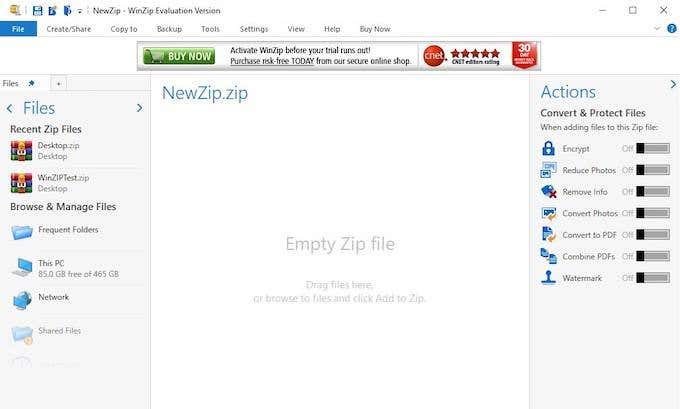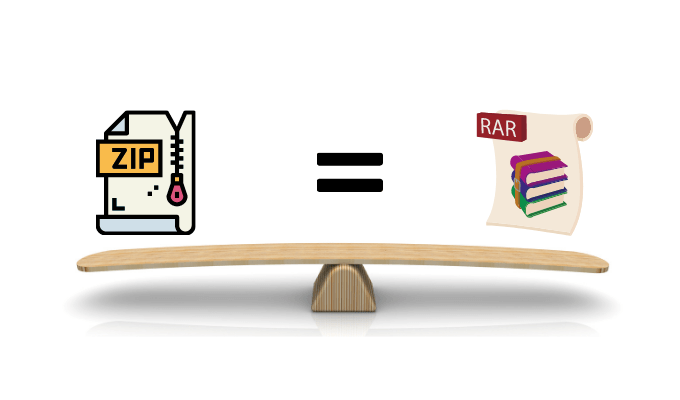In this article, we’ll go through some of the major differences between the two programs in terms of features and also a quick look into price and performance.
What is WinRAR?
It has become something of a running joke to ask if people paid for WinRAR. The program offers a 40-day free trial, after which it prompts you for payment. However, it is still usable after that trial period without pay. Believe it or not, WinRAR goes beyond the meme. In fact, WinRAR has become one of the most common file archivers and compression utilities on Windows. It was released in April of 1995, with its most recent update landing on June 29 of 2020. The program is still supported and used worldwide.
Feature Differences
You may think the most obvious difference between WinRAR and WinZip is that one supports RAR files and the other supports ZIP files, but that’s not the case—both programs support both file types. In fact, here is a breakdown of all supported file types for each. Both programs can compress and extract files, although the performance doesn’t differ between the two in any dramatic way. You should note that while WinZip does work on Mac, WinRAR is Windows-only. If you want to work with RAR files on a Mac platform, there are other options to choose from (including WinZip itself.)
Price: WinRAR Free Trial is Permanent
WinRAR is the go-to option for many users due to its free price point. It offers a 40-day free trial after which you will be prompted to pay, but it’s never enforced. In fact, the never-ending free trial has become a part of WinRAR’s business model. For the average user, WinRAR is an occasional tool. The company actually generates the majority of its revenue through special features included for enterprise-level clients. On the other hand, WinZip offers a 21-day trial. Once this time period is up, you will have to pay or the service will no longer work. As a result, WinZip is often thought of as a “premium” service, although the difference in performance isn’t that significant.
Performance: Very Little Difference
To compare performance between WinRAR and WinZip, we set up a test consisting of 20 files of different file types and sizes including documents, images, video, and audio. In total, the files were 1.78 GB in size. We measured the rate of compression, the time it took to compress the files, and the end result. WinRAR took 2 minutes and 6 seconds to compress the files. When complete, the final compressed files were 1.77 GB—barely a difference to speak of. On the other hand, WinZip took 11 seconds to add the files to its folder and then compressed them in the background, making it much more difficult to track the total time. However, the end result was the same: a 1% compression for a final size of 1.77 GB. Neither program compressed files by much, but that is due to the fact most of the files were multimedia. Multimedia files typically do not compress by much, as they are already compressed. On the other hand, documents and text files see much more significant compression. These days, many people opt for 7zip over WinRAR because it comes pre-installed on many PCs or packaged with GPU drivers. However, WinRAR is still useful, particularly if you want better compression without a high price tag. Don’t feel bad about not paying for WinRAR. Like we said before, it’s part of the business model. What the company generates from enterprise-level purchases more than makes up for the users that only need to unzip a file once or twice a year.



